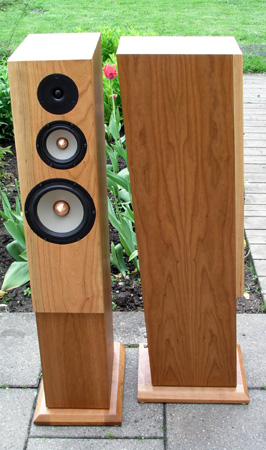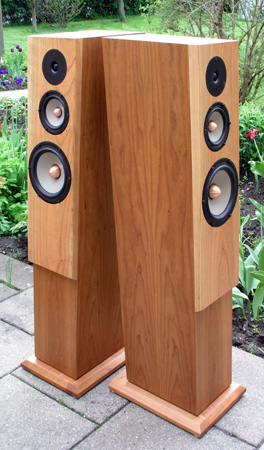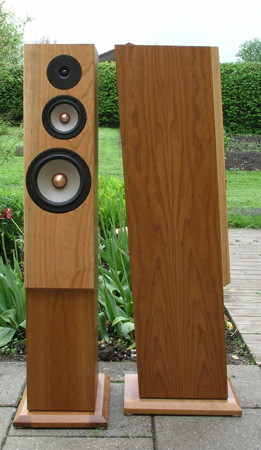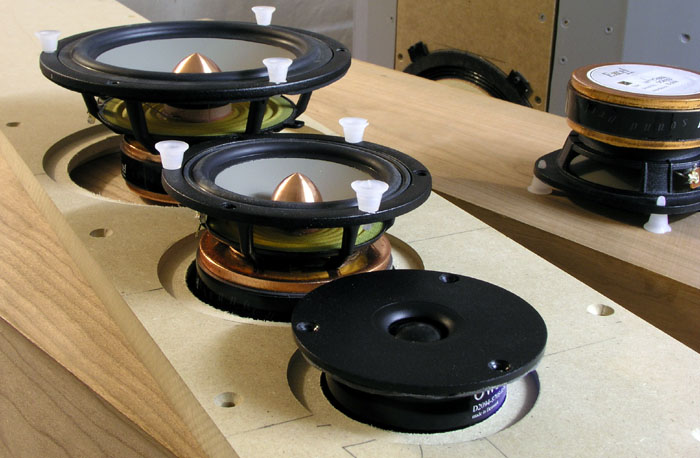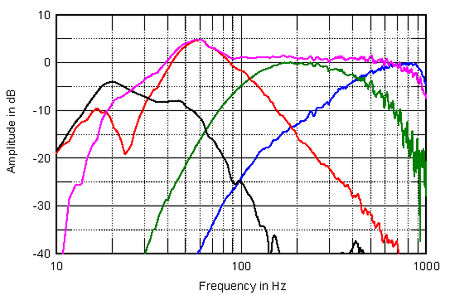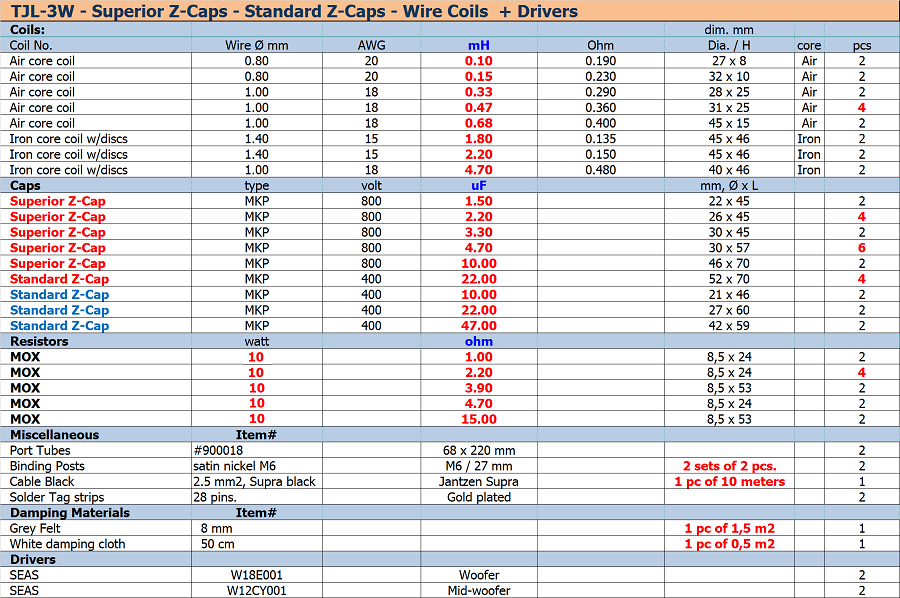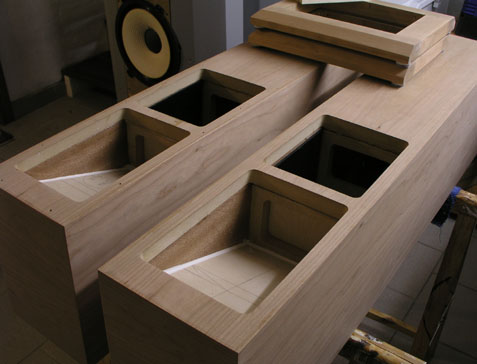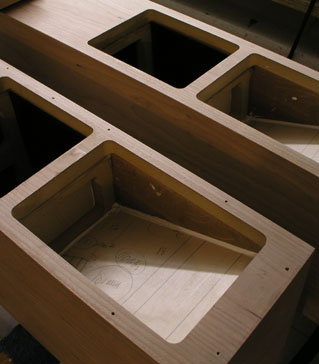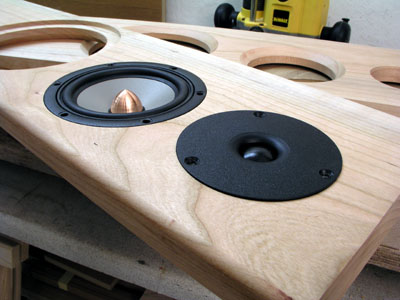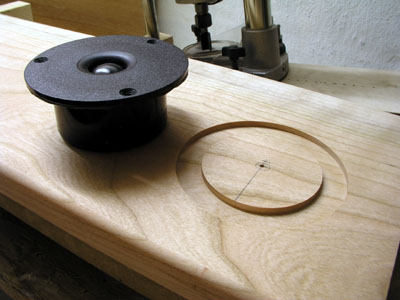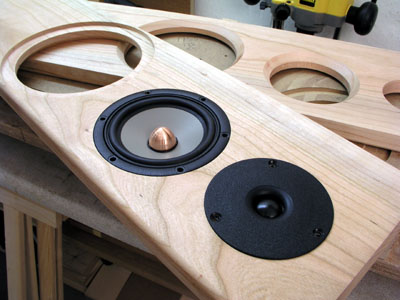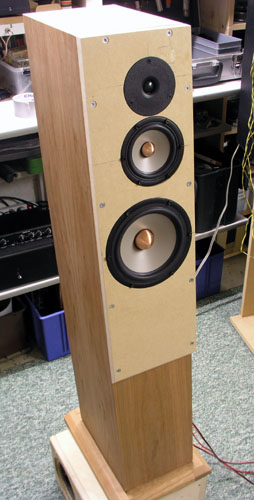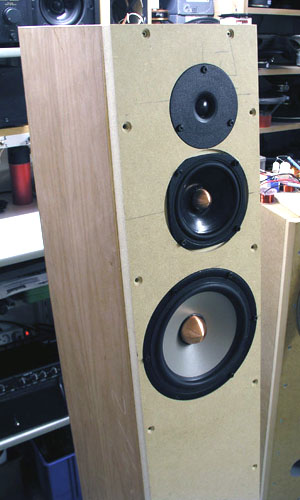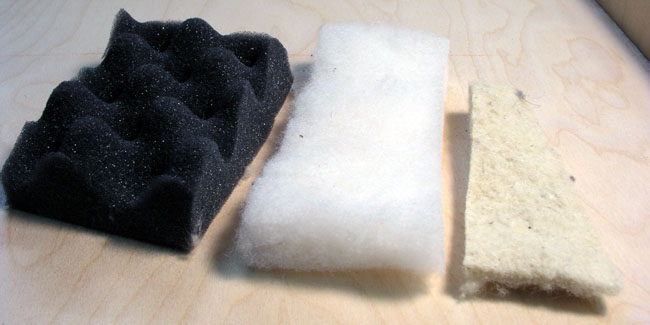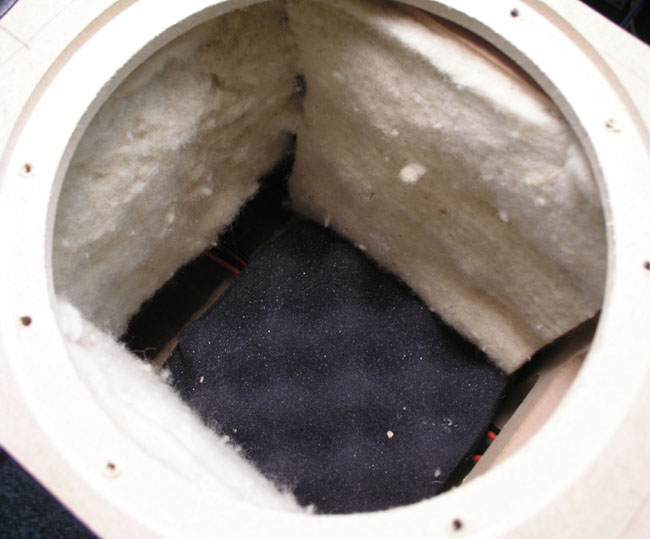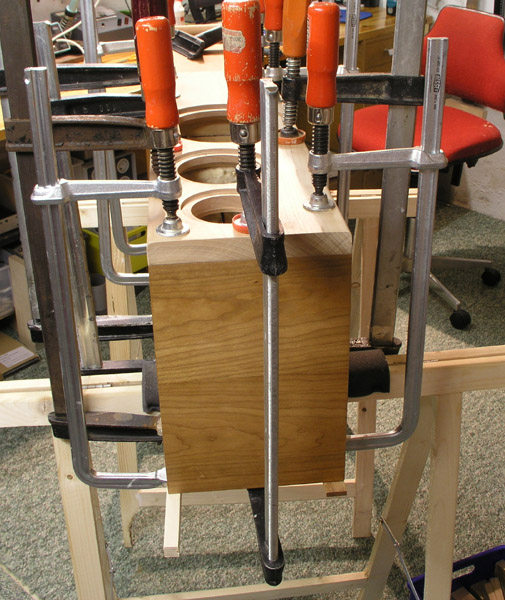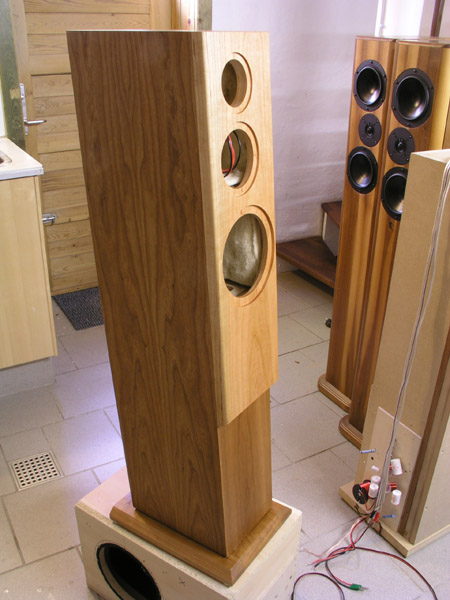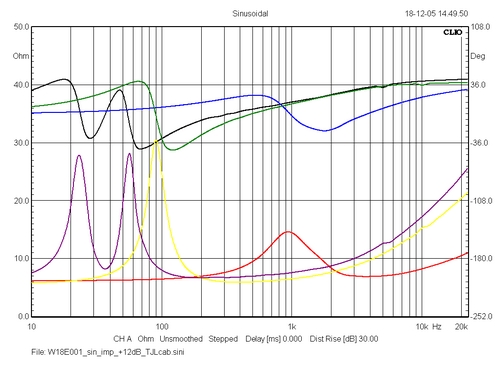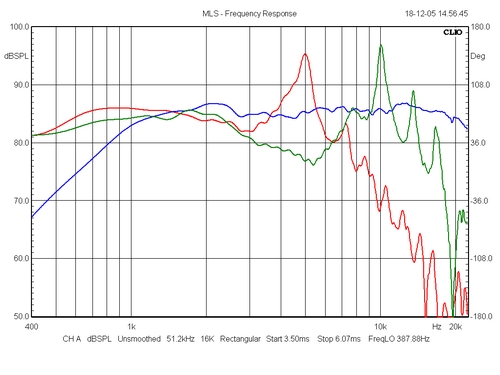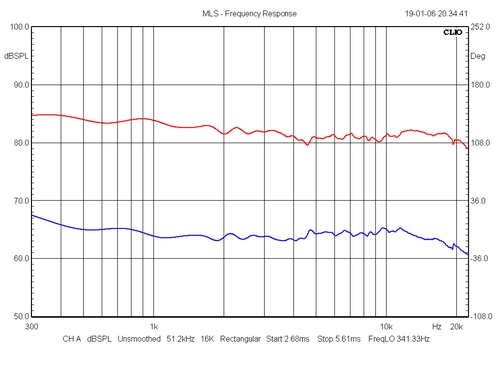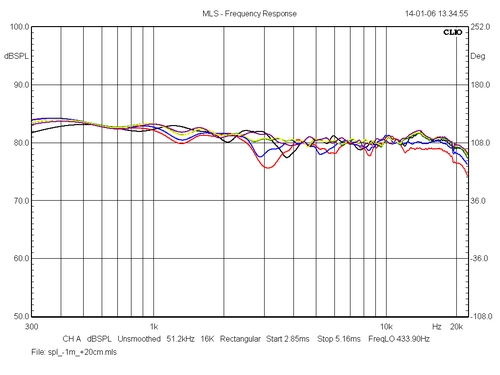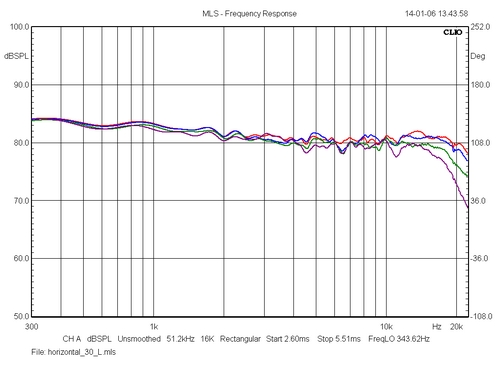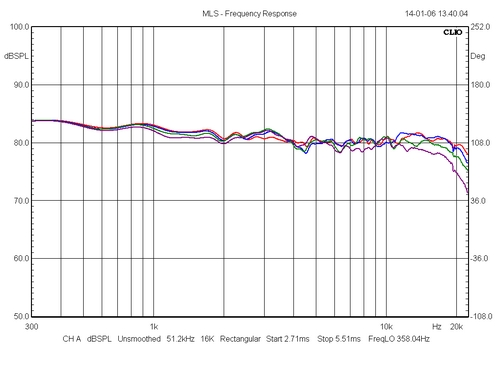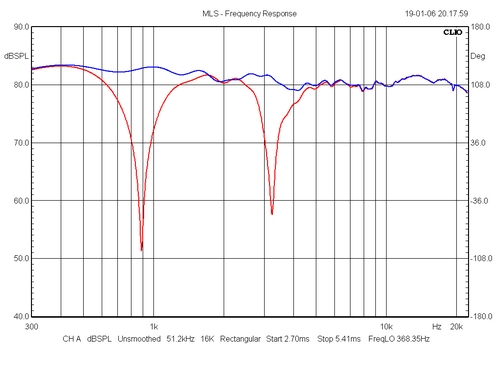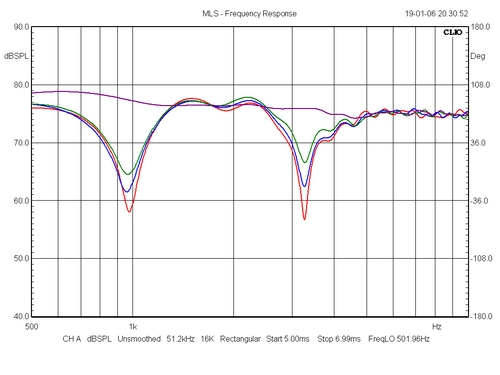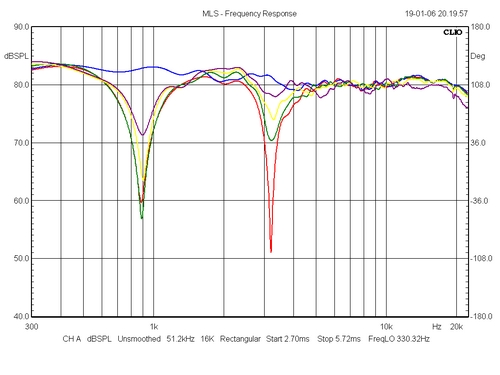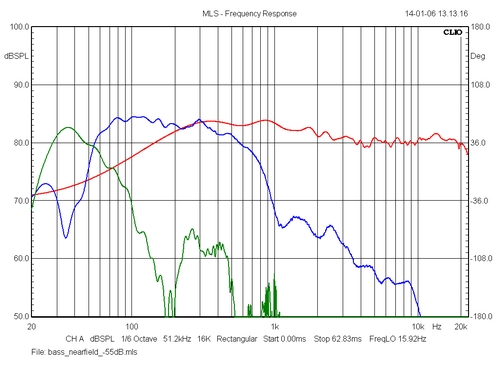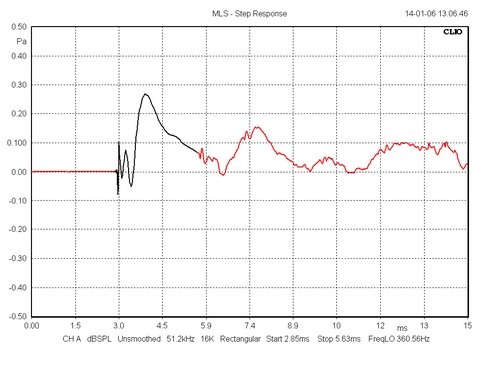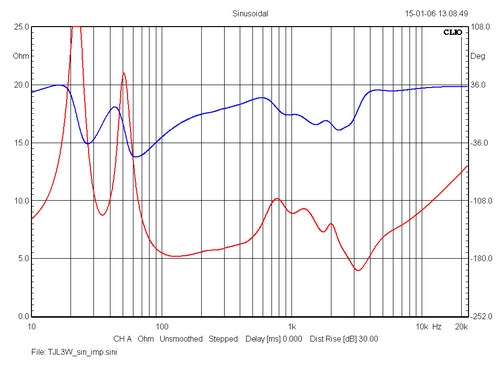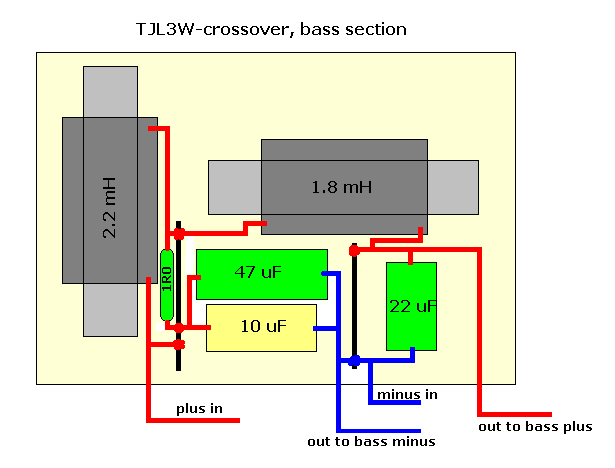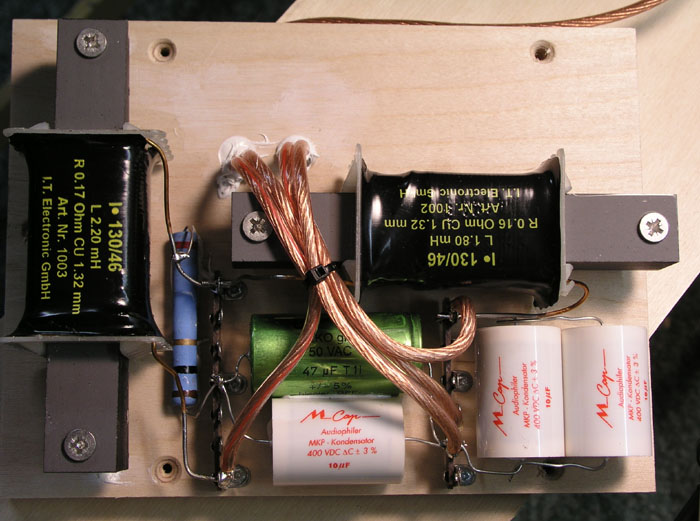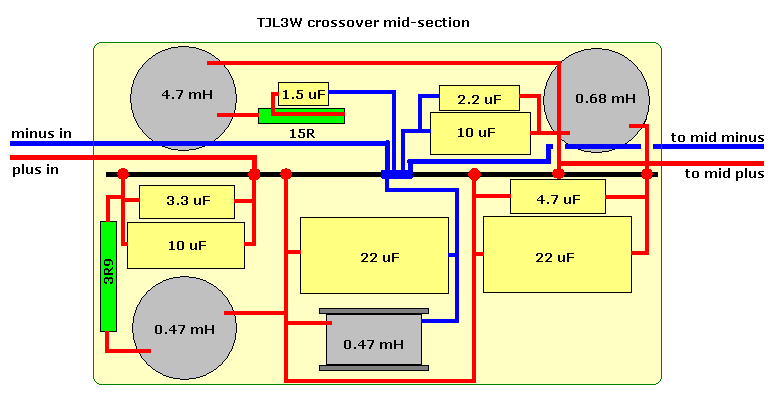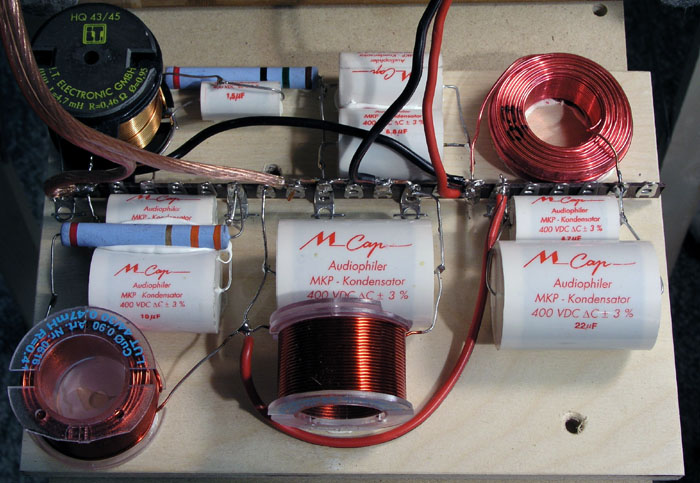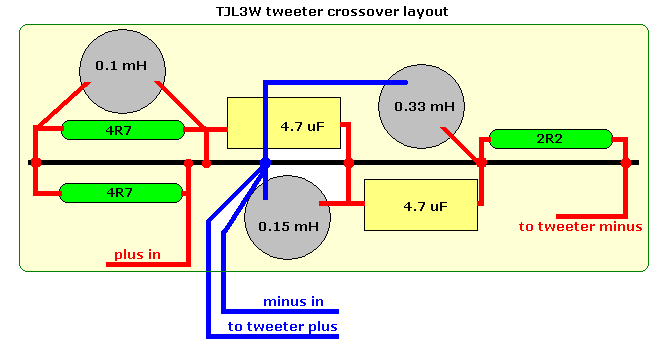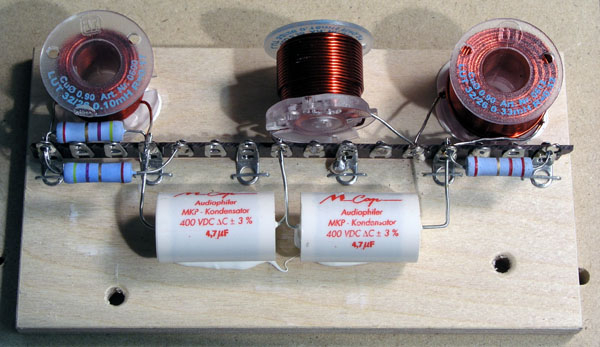|
TJL-3W
Copyright 2006 © Troels Gravesen
Open kit, not supported by Jantzen Audio. CROSSOVER CABINET Measurements
Download specs: SEAS W18E001 + SEAS W12CY001 + HIQUPHON OWI I do think I've been writing a lot about the TJL 3-way. The experiences gained from the Ekta and Zahra made me even more anxious to get started. If the latter two constructions hadn't come along, I would have done the TJL3W a long time ago. But events took their own course and I have been pleased with the results of the former constructions and the TJL3W was very much next. The TJL2W is my favourite among a number of 2-way floorstanders and you always ask how to make a good thing better. The TJL shares the limitations of most other 6" + tweeter two-ways: Lack of dispersion in the upper midrange/lower treble due to the bass driver having to handle everything up into the treble area despite the low point of crossover around 2500 Hz. When a single driver has to pump the deep bass and at the same time handle the delicate upper midrange and lower treble there are limitations to the loudness we can expect from such a design. Suitable for most, but it can't play excessively loud. However, the TJL3W wasn't made to play loud, rather to play low. Below some thoughts about crossing over in the "critical" midrange and some thoughts on having a uniform power response from our speakers.
Don't cross over between drivers in the critical midrange! Just to recapitulate: lower midrange = 160-320 Hz, middle midrange = 320-640 Hz, upper midrange = 640-1280 Hz. Above 1280 Hz we're getting into treble territory and no wonder we find 6-7" drivers having trouble here. People are always surprised when I play a 315 Hz warble tone from a test CD. Is it really this high?! So, even 3-4" drivers can cope with a 300 Hz point of crossover and we do see middomes taken this low. Does it sound natural? I case you have an electronic crossover, preferably 24 dB/octave, try make a 320-1280 Hz midband and play voices on a 4", a 5" and a 6" driver. Add a coil to the drivers in order to make the response reasonably linear. All drivers on suitable baffles. Try adjust to the same loudness from the drivers and listen to voices. Quite some difference. Remarkably different. I've always found 6" drivers to give the best lower midrange. It adds a low-end weight to vocals that smaller drivers cannot do. However, depending on the woofer below and the chosen slope of the crossover you can make a perfect blend of sounds. If you can get away with a 2nd order filter the results may be very good indeed. With higher order filters you start depending very much on the actual performance of the driver itself and there's no "help from your friends" here. I've heard excellent vocal performance from a 6" midrange driver taken down to 150 Hz with - presumably - 4th order filters (Von Schweikert VR4 mkIII). In large speaker systems we often see 6" or 8" drivers used for lower midrange and not seldom a small 4" driver helping in the upper midrange, e.g. Krell Resolution 1. This is an interesting speaker as it uses a "low-cost", 4" Peerless pp midrange. This is a dedicated upper midrange driver with flat polypropylene surround making a low-sloped blend with the SEAS W22 around 450 Hz. Read here. The paradigm:
Measurements from Stereophile: Blue is
Peerless M122 mid-driver. Now, few manufacturers go
4-way due to complexity and overall
costs, but no wonder this approach make it
possible to use a driver with a diameter best
suited for the particular frequency range it has
too handle. I have once tried making a 2-way from my 4H52 Flex-Unit with a point of crossover (4th order) at 4.5 kHz and I wasn't impressed. But making a point of crossover in an area where the drivers have an easy one-octave surplus capability is luxury and we may get the best of both worlds. Don't be afraid to cross over in the "critical" midrange! There are - to my mind - great benefits to be gained from this approach, but make sure you have good control over amplitude and phase when you do so. It's not particularly difficult to cross over at 800 Hz. The wavelength is 43 cm here and when you model the bass and mid in LspCAD, the distance from drivers to listening position is much less critical compared to the upper mid-treble situation.
Dispersion characteristics of loudspeakers. The dispersion characteristics of loudspeakers is a controversial subject and an enormous amount of written material is published on the web and even trying to summarise the various opinions regarding this aspect of speaker performance is risky. Read an introduction
here from Dick Olsher: http://www.blackdahlia.com/samadhi/cbae.htm: The problem relates to
having and wide and uniform versus a
narrow and - uneven power response. Both the
choice of drivers and the filters used will have
a major influence on what is achieved. What can
be seen from this construction is a uniform
horizontal and vertical sound dispersion and to
get my feet back on the ground, this has one
distinct feature: My writing desk is close to the
door into our living room where the speakers are
located, giving me rich opportunity to the
"listening from another room"
situation. Actually I sit here an awful lot
writing these web pages! With the TJL3W I can
clearly follow what is going on even at low
levels. It's even better than the Acapella SE.
The "flat" ribbons have a nice
horizontal dispersion, but are usually poor in
the vertical plane (The ATD or NDRL ribbons are
exceptions due to their special construction). As
the Acapella SE is more or less optimised for
on-axis listening, the combined upper frequency
power response is probably significantly lower
compared to the TJL3W. This does not say that the
Acap. SE is a crappy speaker, but was balanced to
produce the flattest response on-axis. Now, with a speaker
having a wide and uniform sound distribution I
can more fully enjoy the music off-axis, even if
it has to pass a door opening - well, I'm only ½
metre away from that door opening - where a
speaker with a narrow and focused radiation will
force me to pay more attention to details at low
levels - and even sometimes draw me into the sofa
in the living room for some "on-axis"
action - and eventually some power napping, which
is good.
My point is that the Ekta,
Zahra and TJL3W due to the combination
of drivers having suitable diameters for the
frequency ranges they have to handle and from the
use of higher order filters produce a more even
power response and are less fuzzy when it comes
to placement. Speakers that have energized my
listening room better than more directional
constructions. Speakers that makes me enjoy the
music also at low levels, that can play louder
due to lack of intermodulation distortion from
overlapping driver's response*, that can play
female vocals much louder due to lack of beaming
- and maybe distortion - in the 1-3 kHz range.
Essentially I get speakers that are "easy to
listen to".... Read here: http://www.troelsgravesen.dk/HES.htm *: By this I mean not trying to combine a 15-20 grams midbass cone to a 300 milligrams tweeter diaphragm. 5 grams appear to be much more suitable. No matter what kind of crossover we use in order to produce the flattest possible amplitude and phase performance, we cannot do anything about the fact that where the drivers have to reproduce the same frequencies, a tweeter dome of 300 milligrams will rise much, much faster compared to a 10-15 grams midbass cone. And I don't care if the whole construction can reproduce square waves or not. I don't listen to square waves. I don't think it's an important parameter. Linear distortion and dispersion appear to be more important.
So, back to the TJL3W: Should you consider
building a speaker like this, keep in mind that
this is a relatively small speaker of 24 litres
net. volume and there are limitations to what a
126 cm^2 bass cone can do. In this construction
you get a decent deep bass (F3 = 40 Hz) and I
render the construction well suited for rooms up
to 25-35 m^2. I had the cabs made in
June 05 and we're now in January 2006. I
routed the test front panels to be attached by
screws, as I wanted to experiment with both the
W11 and W12 middrivers and the HiQUPHON OWI and
the Fountek JP3 tweeters. The panels seen above
are routed for the OWI and this will be the
initial set-up. For those who may want to upgrade
their TJL, I'll try the JP3 ribbon later. Having the TJL3Ws running
for the first time I used these CDs: Siri's Svale Band has been my favourite recoding for a long time for demonstrating loudspeakers. People may like or dislike jazz music, but this recording will leave no one unaffected. Recorded in Trondhjem, Norway. Excellent! The TJL3W will tell you a lot of what's going on in the studio. If your speaker has a good level of transparency, this recording will make you want to take the few step into the studio and watch what's going on. Maddy Prior: I
had this CD from my friend Darryl and it's a
killer! Three female vocals producing narrow
peaks of 10-15 dB in the 700-1000 Hz range. Very
few speakers can handle these vocals without
severe distortion. The Zahra and the Ekta did
these recordings very well and thanks to W12
upper midrange driver, the TJL3W is not left
behind. The Zahra may beat the TJL3W by a small
margin due to higher sensitivity (larger membrane
area) but the TJL3W is more neutral due to the
magnesium drivers.
Do I hear something about a lot of components here? Well, we're dealing with metal cone drivers and we need to completely eliminate the cone break-ups. Basically the crossover between bass and mid is close to a third order on the acoustic side. The bass needs a 4th order electric filter to render this and the benefit of this is we don't need any notch filter for this driver. The middriver
need a 3rd order HP section and a 4th order LP
section. The tweeter section is a bit tricky and
this is basically a 4th order with some minor
equalisation at the inlet. A high order crossover may seem rather complex, but breaking it up into the various sections, it becomes quite manageable. The bass section is placed at the bottom of the cabinet and consists of only 2 coils, 3 caps and a resistor. I'll make separate boards for the mid and tweeter sections to maintain overview. And by the way: I've recently auditioned the Von Schweikerts VR4 mkIII speakers and if you still think 4th order filters will kill the music, go listen to these speakers. If you think paper cone (Aerogel) midrange drivers lack homogeneity and transparency, go listen to the VR4 mkIII. If you think the Vifa XT25TG tweeter is crap, go listen to the VR4 mkIII. It's not the end of the world, but a great lesson in doing things clever. Forget about "Global Axis Integration Networks" and cascaded 1st order filters - whatever that is. Common marketing rubbish. Schweikert uses coils and caps like the rest of us, so if you use higher order crossovers, do it right. Well done!
The two coils in the bass section are important. Used cored and very low-ohm coils < 0.2 ohms DC resistance. We need all the sensitivity we can get from the W18. The 4.7 mH coil for the LCR filter can be a high-ohm cored coil made from thin wire as the LCR carries a 15 ohms resistor anyway. Don't use a monster coil for this small circuit. HIQUPHON OWI tweeter available here. Mail info@hiquphon.dk
The question on placement of drivers is one I often receive from builders, like: "Can you explain the reason for placing some of the drivers off-centre on the front baffle? Are there any guidelines here or should I just place them so they look good?" There's a short and a long explanation. The long one is found in this link: http://www.speakerdesign.net/understand.html The short one is that the baffle provides an acoustic support for the soundwaves generated by the drivers. When the soundwave reaches an edge, it "falls down" creating irregularities in the frequency response of the driver. This is compensated in the crossover to render a flat response. By off-centering the drivers the intrinsic response of the drivers is often smoothed and this makes it possible to make a less complicated crossover. So the drivers have to
placed exactly as shown in the drawings,
otherwise the crossover will not work as
intended. Also check this file for a transmission line solution: TJL3W built by Ingvar/Sweden
The starting point, frequency response and impedance of drivers:
Left: Impedance of drivers in
cabinet. The chosen vent (Monacor BR60-TR) works
spot on in this cabinet. Vent tuning is approx.
37 Hz. The high-Q peaks of the magnesium drivers are hard to overlook. Adding the MLS signal to the drivers during testing, the sound is terrible. It shreds your ears. In particular the W18 having the peak at exactly 5 kHz. The W12 doesn't sound nearly as bad having the peaks from 10 kHz and above. I took special precautions in the two-way TJL to ensure the W18's 5 kHz would be gone. Steep filters and a notch filter as well. But once these peaks are gone, there's a calm, "dark" and uncoloured sound left. "Dark"? The magnesium drivers have a quietness contrary to most other cone materials and for lack of better words, I call it "darkness". Reading a review recently on a high-end speaker using the Accuton drivers, it appeared that the reviewer almost thought they were too un-coloured. We're so used to the mixed blessings of cones breaking up in all sorts of ways that once we're left with a speaker made from drivers with significant reduced levels of cone colouration, we get a little uneasy from not hearing what we use to do. The finished speakers:
SPL response of the finished speaker. An overall smooth response with the usual minor tilt downwards towards the highs rendering a smooth presentation of overtones. The HIQUPHON OWI indeed is a fine tweeter. Blue is minimum phase. Power response:
Horizontal dispersion:
More SPLs:
Construction of crossover Bass section:
Midrange section:
Making the crossover with Superior-Z caps will require quite some more space, so be prepared to an external crossover.
Tweeter section:
Making the crossover with Superior-Z caps will require quite some more space, so be prepared to an external crossover. |
